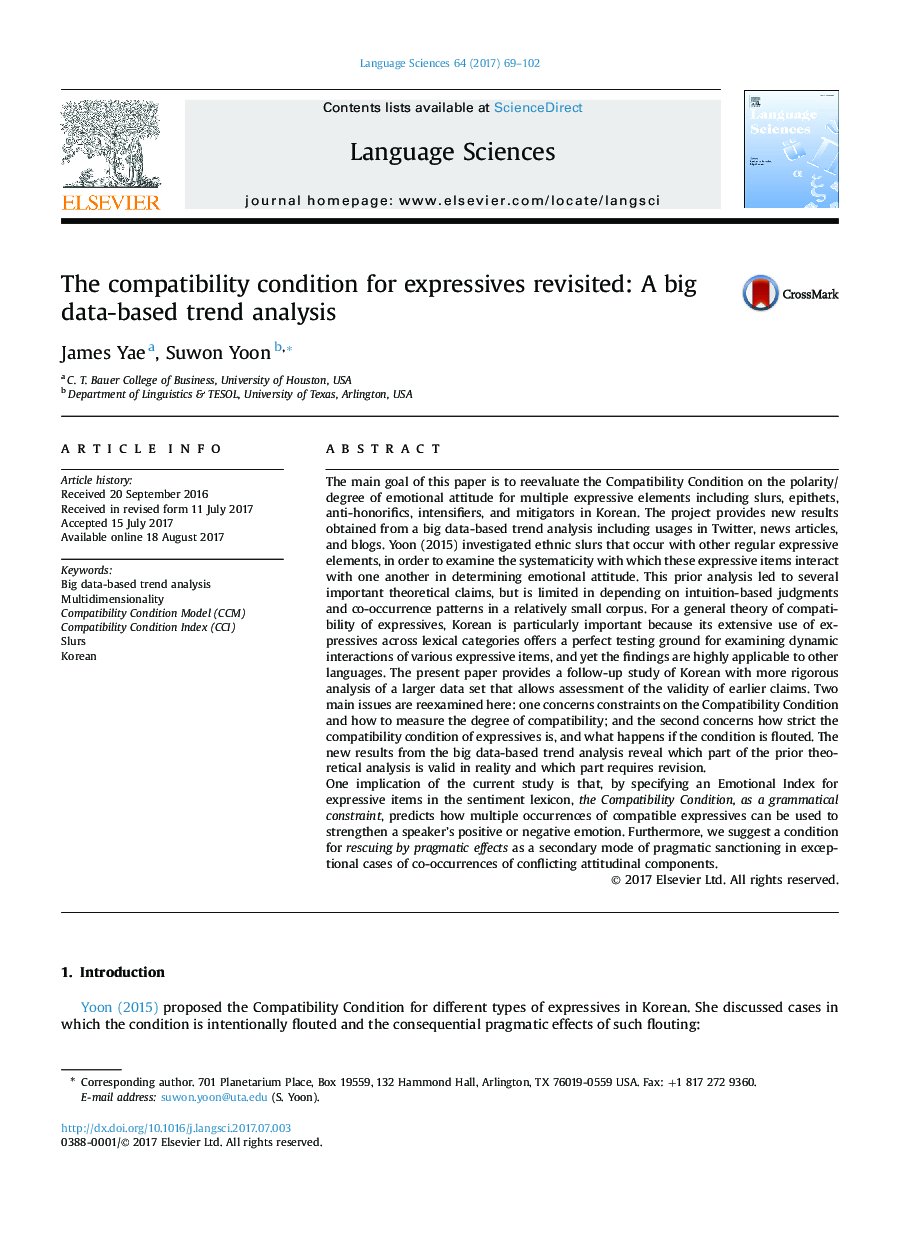| Article ID | Journal | Published Year | Pages | File Type |
|---|---|---|---|---|
| 5124509 | Language Sciences | 2017 | 34 Pages |
â¢We re-evaluate the earlier proposed Compatibility Condition (Yoon, 2015).â¢We offer a Big Data-based trend analysis with Twitter, news articles, blogs.â¢It reveals the systematicity of expressives as a grammatical constraint.â¢We suggest rescuing by pragmatic effects as a secondary mode of sanctioning.â¢Identification of a novel case of expressives supports multidimensionality.
The main goal of this paper is to reevaluate the Compatibility Condition on the polarity/degree of emotional attitude for multiple expressive elements including slurs, epithets, anti-honorifics, intensifiers, and mitigators in Korean. The project provides new results obtained from a big data-based trend analysis including usages in Twitter, news articles, and blogs. Yoon (2015) investigated ethnic slurs that occur with other regular expressive elements, in order to examine the systematicity with which these expressive items interact with one another in determining emotional attitude. This prior analysis led to several important theoretical claims, but is limited in depending on intuition-based judgments and co-occurrence patterns in a relatively small corpus. For a general theory of compatibility of expressives, Korean is particularly important because its extensive use of expressives across lexical categories offers a perfect testing ground for examining dynamic interactions of various expressive items, and yet the findings are highly applicable to other languages. The present paper provides a follow-up study of Korean with more rigorous analysis of a larger data set that allows assessment of the validity of earlier claims. Two main issues are reexamined here: one concerns constraints on the Compatibility Condition and how to measure the degree of compatibility; and the second concerns how strict the compatibility condition of expressives is, and what happens if the condition is flouted. The new results from the big data-based trend analysis reveal which part of the prior theoretical analysis is valid in reality and which part requires revision.One implication of the current study is that, by specifying an Emotional Index for expressive items in the sentiment lexicon, the Compatibility Condition, as a grammatical constraint, predicts how multiple occurrences of compatible expressives can be used to strengthen a speaker's positive or negative emotion. Furthermore, we suggest a condition for rescuing by pragmatic effects as a secondary mode of pragmatic sanctioning in exceptional cases of co-occurrences of conflicting attitudinal components.
